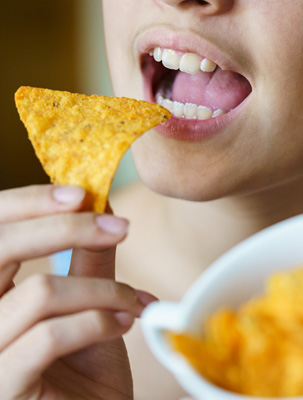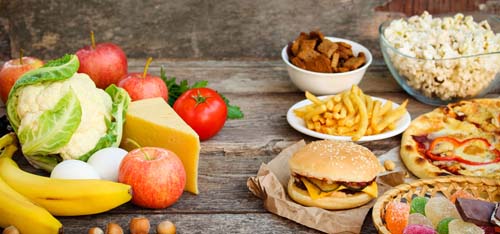Free Case Evaluation
You will never be charged a fee unless a recovery is made for you.
Ultra-processed foods (UFP) are highly processed foods that contain multiple ingredients not commonly found in home cooking—most sodas, mass-produced snacks, many breakfast cereals, to name a few. UPFs have been associated with many health issues, including type 2 diabetes and nonalcoholic fatty liver disease. Some people are filing lawsuits if they developed type 2 diabetes or nonalcoholic fatty liver disease before age 21 or if their children did.
Ultra-processed foods usually contain a long list of ingredients and chemical additives and little if any whole foods. Whole foods are simply natural, or close to natural, foods such as fruits, meats, and nuts. When you eat them, their vitamins and nutrients are still intact.

Processing foods changes them from their natural state. Ultra-processed foods are made from substances extracted from foods, such as fats, starches, added sugars, and hydrogenated fats. They may also contain additives like artificial colors and flavors or stabilizers.

Ingredients used in UPFs include food substances of no or rare culinary use and classes of additives whose function is to make the final product palatable (tasty) or often hyper-palatable (“cosmetic additives”). Food substances of no or rare culinary use that are used only in manufacturing UPFs include varieties of sugars (fructose, high-fructose corn syrup, ‘fruit juice concentrates’, invert sugar, maltodextrin, dextrose, lactose), modified oils (hydrogenated or interesterified oils), and modified protein sources (hydrolysed proteins, soya protein isolate, gluten, casein, whey protein, and mechanically separated meat). Cosmetic additives used in the manufacture of ultra-processed foods include flavors, flavor enhancers, colors, emulsifiers, emulsifying salts, sweeteners, thickeners, and anti-foaming, bulking, carbonating, foaming, gelling, and glazing agents. These classes of additives disguise undesirable sensory properties created by ingredients, processes, or packaging used in the manufacture of ultra-processed foods to give the final product sensory properties especially attractive to see, taste, smell, and/or touch. In other words, the additives make food that would not be desirable, desirable.
Ultra-processed foods are less filling than whole, or natural, foods. They may also raise your blood sugars higher than minimally processed and whole foods. They are also usually higher in calories and sugar and lower in protein and fiber. UPFs are associated with obesity. They are not as nutritional or healthful as whole foods. Many UPFs are snack foods that promote mindless eating, replacing the need or desire for a real meal. In addition, they may contain pro-inflammatory ingredients, such as refined sugars (carbohydrates) and unhealthy fats such as corn oil.
It is not hard to find examples of ultra-processed foods. The easiest way it so look at the ingredients listed for the food product. UPFs’ ingredient lists tend to be fairly long and/or contain some of the telltale ingredients listed above.
Telltale signs that a food is ultra-processed:
Common examples of ultra-processed foods are:
Studies have found that those who consumed more ultra-processed foods had higher risks of cardiovascular disease, coronary heart disease, and cerebrovascular disease.
One review, published in the British Medical Journal (BMJ) in 2024, looked at 45 studies involving almost 10 million participants. The review authors suggest that eating more ultra-processed foods is linked to a higher risk of dying from any cause and has ties to 32 health conditions, including heart disease, mental health disorders, obesity, and type 2 diabetes.
Several prospective and cross-sectional studies have shown positive associations between UPF consumption and the risk of cardiovascular disease, type 2 diabetes, and cancer.
Sources
Bowman, A. (2024, June 4). Key ingredients to avoid in ultra processed foods. Retrieved from https://mcpress.mayoclinic.org/nutrition-fitness/key-ingredients-to-avoid-in-ultra-processed-foods/
Canella, D., et al. (2023, August 30). Food additives and PAHO’s nutrient profile model as contributors’ elements to the identification of ultra-processed food products. Retrieved from https://www.nature.com/articles/s41598-023-40650-3
Cordova, R., et al. (2023, December). Consumption of ultra-processed foods and risk of multimorbidity of cancer and cardiometabolic diseases: a multinational cohort study. Retrieved from https://www.thelancet.com/journals/lanepe/article/PIIS2666-7762(23)00190-4/fulltext
Gibney, M. (2018, September 14). Ultra-Processed Foods: Definitions and Policy Issues. Retrieved from https://pmc.ncbi.nlm.nih.gov/articles/PMC6389637/
Lane, M., et al. (2024, February 28). Ultra-processed food exposure and adverse health outcomes: umbrella review of epidemiological meta-analyses. Retrieved from https://www.bmj.com/content/384/bmj-2023-077310
MacMillan, C. (2024, July 10). Ultra-processed Foods: Are They Bad for You? Retrieved from https://www.yalemedicine.org/news/ultraprocessed-foods-bad-for-you
McManus, K. (2020, January 9). What are ultra-processed foods and are they bad for our health? Retrieved from https://www.health.harvard.edu/blog/what-are-ultra-processed-foods-and-are-they-bad-for-our-health-2020010918605
Monteiro, C., et al. (2019, February 12). Ultra-processed foods: what they are and how to identify them. Retrieved from https://pmc.ncbi.nlm.nih.gov/articles/PMC10260459/
Stelluti, A-M. (2019). Everything in moderation? Focusing on ultra-processed foods. Retrieved from https://badgut.org/information-centre/health-nutrition/ultra-processed-foods/
You will never be charged a fee unless a recovery is made for you.